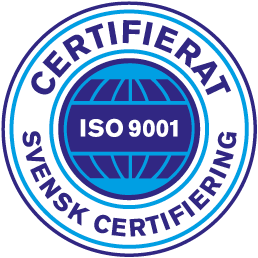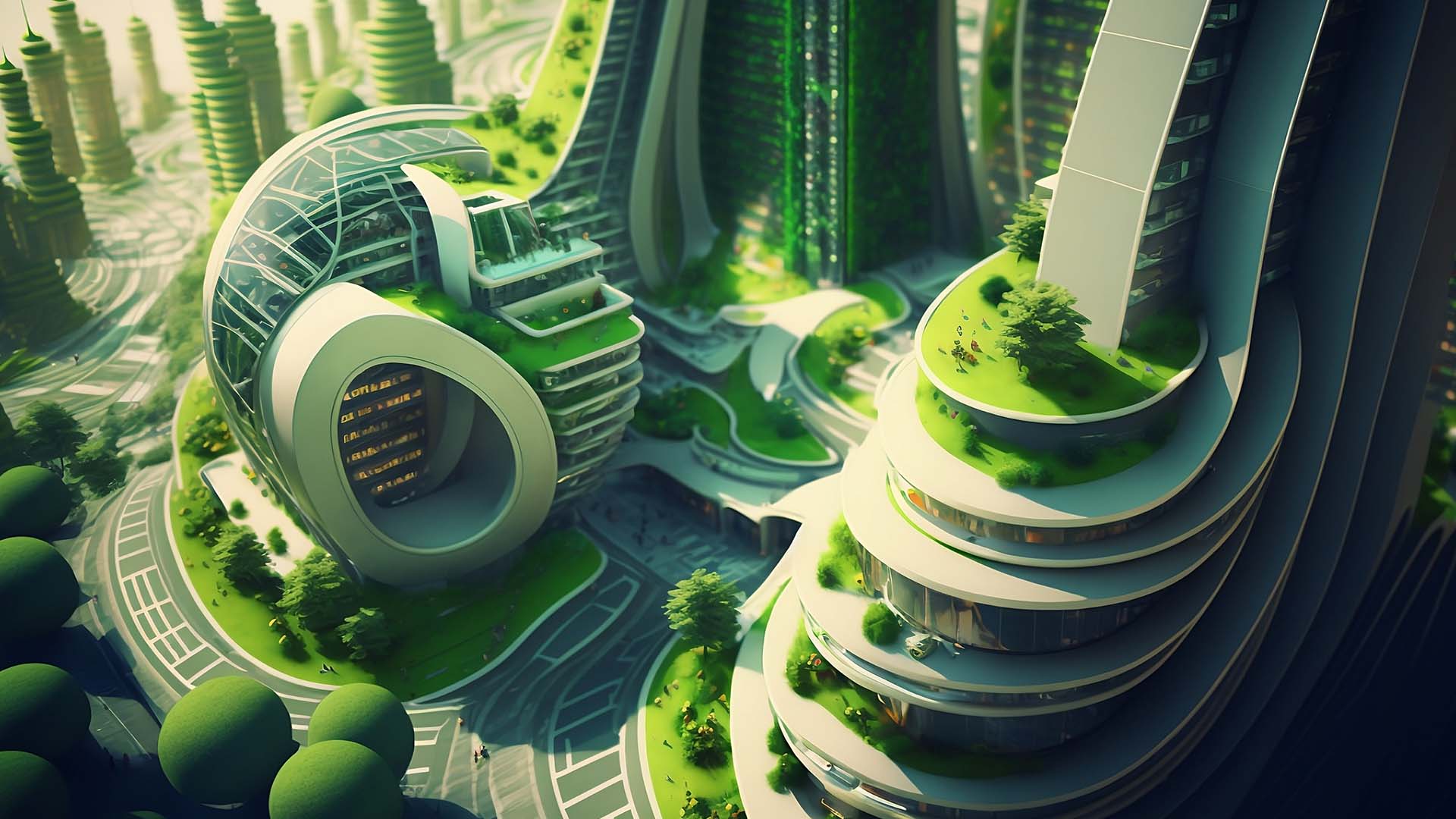S&OP MasterClass™
#9: Opi DLG:ltä – kestävä kehitys toimitusketjussa, osa 1
Tervetuloa S&OP MasterClassiin.
Podcasteissa syvennytään integroituun liiketoimintasuunnitteluun sekä toimitusketjun suunnitteluun. Vieraina jaksoissa on pitän linjan asiantuntijoita, jotka valottavat asioita ymmärrettävään muotoon.
894060029
Miten DLG:n kaltainen suuryritys toimii kestävän kehityksen parissa?
SBTi (Science Based Targets Initiatives) on hyväksynyt DLG:n. DLG:lle tämä hyväksyntä tarkoittaa päästöjen huolellista kartoittamista (mukaan lukien scope 3) sekä sitoutumista kunnianhimoisiin kestävyystavoitteisiin ja niiden toteuttamista.
Tämän podcastin 1. osan vieraana on Flemming Højsager Persson, DLG:n toimitusketjun kehityspäällikkö. Hän kertoo, miten sitoutuminen kestävään kehitykseen vaikuttaa toimitusketjuun.
Tässä jaksossa käsitellään seuraavia näkökohtia.
- Miten tiedeperusteiset tavoitteet vaikuttavat DLG:n toimitusketjuun
- Miten DLG odottaa toimitusketjun suunnittelun muuttuvan seuraavien vuosien aikana
- Päästötavoitteiden ja tavoitteiden asettamisen taustalla oleva liiketoiminta-ajatus
- Ja paljon paljon muuta…
Juontajanasi on Søren Hammer Pedersen
Vieraile DLG:n kotisivuilla
Tämän podcastin tuottaa Montanus.
Tässä jaksossa
Alla ovat tämän podcast-jakson tärkeimmät aikaleimat. Voit siirtyä sinua kiinnostaviin aiheisiin.
00:00 Johdanto
01:57 Mikä on toimitusketjun arviointi
05:30 Mistä toimitusketjun arvioinnin tekeminen aloitetaan?
07:01 Tietojen laatu
10:48 Varastostrategia ja mitä se tekee
13:28 Toimitusketjun arvioinnin ensimmäinen vaihe: Kysynnän tarkastelu
17:36 Varastoanalyysi, toimittaja-analyysi - miten?
20:35 Business case oikein tehtynä
23:25 Raaka-aineet ja komponentit arvioinnissa
24:31 Liiketoimintapotentiaalin purkaminen
26:43 Automaatio ja tarvittavat työkalut
32:26 Mitkä ovat kriittiset tekijät, jotka tekevät tai rikkovat toimitusketjun arvioinnin?
Koko jakson transkriptio
Søren Hammer Pedersen:
Hello everybody. Everyone, welcome to this S&OP Masterclass from Perito Consulting. The topic of these S&OP masterclasses is to dive into supply chain planning topics that are hot at the moment. Try to give you our perspectives on these topics and hopefully give you some tips and tricks that we can use or you can use in your own companies. And today’s topic is around sustainability and supply chain planning. My name is Søren Hammer Pedersen. I will be your host today, but luckily, I’m not alone in the studio. I’m joined today here by my very good colleague, Flemming Højsager Persson, who is working for the company, DLG. Very welcome, Flemming.
Flemming Højsager Persson:
Thank you very much. Thank you.
Søren Hammer Pedersen:
And today, we are diving into sustainability and supply chain planning, but of course, all our listeners out there are not as lucky as I am. I’m working with you on a almost daily basis. So maybe we could start with a brief introduction to who is Flemming and the company DLG, so people know who they are looking and listening to here today.
Flemming Højsager Persson:
Yeah, makes good sense. Thank you much Søren. Yeah, I think starting with myself. My name is Flemming Højsager Persson and head of what we call supply chain development in DLG. It’s a little bit of fancy title, but basically working with projects, moving not only DLG, but especially the DLG supply chain, the supply organization forward. Sustainability, one of the big topics, but also in general, cost optimization, increased performance, et cetera. So that’s my main topic going across DLG, the Danish organization, not the broader one, but I can come back to that a little bit later. Probably jumping a little bit into DLG. What kind of company is that? In Danish, it’s short for Dansk Landbrugs Grovvareselskab. So that’s the largest agriculture company here in Denmark. We actually also one of the largest agriculture companies in Europe. I think we’re within the top five, so that’s pretty big.
So yeah, we are especially company because we are a corporation, so we are just like Ireland and Danish krone, we are owned by the Danish farmers, which we are extremely proud of. So they are, yeah, our owners, but they’re also our biggest customers and also our biggest suppliers. So that’s why we, in different topics and different settings, talk about that. We have quite a circular value chain or circular supply chain because we are with the farmers all over their yearly cycle. So we bring feed out to them. We also take the grain back into our setup, into production. We export a lot. We’re one of biggest exporting companies in the world with grain for instance. We also import a lot. So we are quite large that way around. We normally talk about having nine different supply chains and that’s in order to address our complexity because being a supply chain nerd, you don’t just look at DLG being one company, we organize it in different flows because we have different organizational setups.
We have a factory structure, we have a warehouse structure, transportation structure, et cetera. So we break it down and look across our setup within nine supply chains. DLG is founded in Denmark, owned by the farmers as I mentioned, but we are quite large in Europe as well. We are actually the largest Danish company operating in Germany, which I don’t think a lot of people know.
Søren Hammer Pedersen:
No. Yeah.
Flemming Højsager Persson:
And with our increased and record-breaking turnover here last year, 80 billion Danish krones. We are really, really strong within the European market on agriculture, but also within energy and also housing actually, which is also part of our new strategy, Creating the Future 2030, where we especially look into those three business areas, which all of course have a heavy supply chain set up and a strong link to sustainability.
Søren Hammer Pedersen:
Yeah. But I think that hits the nerve perfectly. And also why I thought that it was so interesting that you could join us here today, but both as a company, it’s such a… Let me put it the right way, it’s such a huge company, but also, it’s not only a large company, it’s also a very, very complex supply chain. And you are, at least from my perspective, very much involved with the sustainability. Also because of course the footprint you have around this very large organization-
Flemming Højsager Persson:
For sure.
Søren Hammer Pedersen:
… many of them will have quite a big impact sustainability wise. So extremely relevant company for this content. To dive right into it, because before we’re talking maybe on the sustainability and supply chain planning, which of course, is one of the topics that we typically cover in these podcasts. But maybe to have a look at the DLG as a company in terms of sustainability for what I thought was very interesting is to my perception, it’s not a new thing for you. You’ve actually been working with this for number of years and it is quite far ahead. Could you elaborate a bit on how you see this in your company at the moment?
Flemming Højsager Persson:
Yeah, for sure.
Søren Hammer Pedersen:
Yeah.
Flemming Højsager Persson:
And actually, it’s not climate and protecting the climate. Working with environment is not new at all. I think I’ll jump to some of the recent things. A couple of years ago when we started our new strategy process, Creating the Future, so before that one arrived, we had a previous strategy called Leading the Way, and part of that, we formulated what we call a zero strategy, and that is basically our sustainability strategy. It’s our clear climate targets. Also trying to formalize what we are already working on and has been working on for several years. So it wasn’t new, but it was quite new that we together with our owners formalized a clear strategy, saying that we want as a large corporation to be climate neutral within our own setup and the emissions that we can take care of. So we’ll come back to scope one, two and three a bit later.
So within our own reach for the corporation, we want to be climate neutral in 2050 within our operations. Several different clear targets. I think one of the other one’s worth mentioning is also soybeans. We import a lot to not just Denmark, but also to Europe. It’s one of the most important ingredients beside grain in the feed flow to the farmers. It’s quite… I can say that I think the population in general doesn’t look very good, very… Say they don’t like that flow because they hear that soy comes from South America and it’s being produced because you take down a lot of forest areas, deforestation and you put into large ships and you export it to Denmark and so on. And that’s true, but we have a clear target by 2025 that we want to only buy and import soy that comes from areas that has a sustainable foresting strategy, foresting areas, which is quite a huge step because we import a lot of million tons, so we talk very large quantities.
Søren Hammer Pedersen:
Yeah, everything you do has quite a big impact.
Flemming Højsager Persson:
We normally tend to talk in ton and also million of tons.
Søren Hammer Pedersen:
Yeah. Yeah.
Flemming Højsager Persson:
So when we set a target like that, has a huge impact on our entire flow and the company set up. There’s different areas as well as also with the diversity, equity and inclusion and so on. But if we stay within the more supply chain areas there that this CO2 emission part is the most critical thing. Last year, actually in March ’22, last year, we put in the papers for applying for SBT, so science-based target based on our climate targets, climate goals. And actually this year, in the beginning of March, we actually reached it. So we got the certificate, got the stamp that our target is now part of the Paris Agreement. So getting below 1.0 degree, sorry, 1.5 degrees of increase.
And that is a huge stamp within the industry of what we are doing because we have that scale that we have. And we actually, I learned yesterday internally that we are actually the biggest corporation in Europe within agriculture that is getting the SBT target, which is very, very great. And in a Danish context together with Danish krone and all, we can actually now say that with us coming on board, the entire value chain owned by the farmers in Denmark, all the corporations, is actually now under SBT, which is a huge stamp also outside Denmark. So for export of the entire food chain. So yeah.
Søren Hammer Pedersen:
Yeah. I think that’s so impressive that you got that stamp because it’s not easy. People maybe who don’t know think, okay, can we have this science-based target so everyone can get it, but I think it’s around 2,500 companies in the world who has it at the moment or something like that. So it’s not an easy thing to do. And it’s not just an image branding exercise. It’s really you have to have some really clear goals and some really clear plans to achieving those goals, I guess.
Flemming Højsager Persson:
Yeah, because they need to be clear goals, but they also need to be reachable.
Søren Hammer Pedersen:
Yes.
Flemming Højsager Persson:
But also reachable within a short period of time. Because our original climate goal, the overall for our own scope one and two, was climate neutral in 2050. But in our SBT, we have said that we want to have limited our own. So scope one and two by 50% by 2030.
Søren Hammer Pedersen:
Yes.
Flemming Højsager Persson:
So that’s part of that process that we say, okay, we need to have some midterm goals instead of just setting a target to 2050. That target also includes a scope three target, which is-
Søren Hammer Pedersen:
Ooh.
Flemming Højsager Persson:
… It’s quite-
Søren Hammer Pedersen:
Yeah, now becomes difficult.
Flemming Højsager Persson:
Yeah. Because you could say the target from our side is that we want to limit it by 27.5% in 2030. An important factor here is that if we look at the total CO2 emissions within that kind of food industry, which is the farmers is doing, so the entire value chain that if you take 100%, then 1.2% comes from us. So 98.8% comes from the rest of the supply chain where we will say, okay, our ambition is to lower it by 27.5%. So it’s only 1.2% within our own reach. But it’s also quite important for us to be active in saying that instead of pointing fingers at others saying, you need to do something, we say, okay, but we will start with our own 1.2%.
Søren Hammer Pedersen:
Yes.
Flemming Højsager Persson:
Because basically, if everyone is doing that, then you can lower it instead of just pointing that you need to do something further down the value chain. So we take our responsibility.
Søren Hammer Pedersen:
But still, you’re setting targets-
Flemming Højsager Persson:
We’re setting clear target
Søren Hammer Pedersen:
… also for the scope three and that’s-
Flemming Højsager Persson:
Yes, yeah. And you need to do that.
Søren Hammer Pedersen:
… where I think you could be different actually from many companies. I think the general picture right now, in my opinion anyway, is that people are very much looking at the scope one and two of course their own admission, what they have their own control and really struggling or at least being unsure on how to progress. And I think you’re a bit ahead of the crowd there actually setting targets, actually working with that part now.
Flemming Højsager Persson:
And I think the reason why we are doing it, of course, we are quite ambitious, but I think it needs to go back to our onus being a corporation. Because when we look at it, say it’s their emission that we’re looking at, because further down the chain, that’s where they are. So they have a huge interest at DLG where they have bought themself into a corporation because that’s better than being by themself. We need as a total setup to focus on not just scope one and two, but also scope three when you absolutely rise, sir. And it’s quite difficult when you come to scope three because what is my emission, what is yours and what do you cover and what do I need to cover? So talking about transparency and massive load of data and can it be synchronized and all that stuff, that I think is quite a topic by itself.
Søren Hammer Pedersen:
Exactly, exactly. And it’s one of the things that we have been covering also in some of the early podcasts is by, okay, one thing is to map all this scope one, two, and three, but then how to operate and afterwards working with it, that’s going to be a huge, huge challenge going forward. But I think it is very interesting when you say we have these targets for 2030, and I think also maybe worth mentioning because it’s not compared to 100 years ago. I think it’s 2019 or something, that’s the baseline.
Flemming Højsager Persson:
The baselines 2019, it’s not 1990 or something like that.
Nothing at all, yeah. Yeah.
Søren Hammer Pedersen:
It’s a tough target.
Flemming Højsager Persson:
Basically yesterday you could say.
Søren Hammer Pedersen:
Yes, exactly.
Flemming Højsager Persson:
Yeah.
Søren Hammer Pedersen:
So as a supply chain professional, that could be quite scary getting a target like that.
Flemming Højsager Persson:
Yes, it’s scary, but I would definitely say as being responsible for what we call supply chain development, it’s quite ambitious, but it’s also extremely motivating.
Søren Hammer Pedersen:
Yes.
Flemming Højsager Persson:
Because when you look into how do we operate, how do we plan, but especially also how do we design our supply chain? We have a very large complex, but also quite old structure in Denmark. We have 12 factories, we have more than 130 locations around Denmark. We have harbor terminals and so on. So how do we for the future get all that orchestration-
Søren Hammer Pedersen:
Yes.
Flemming Højsager Persson:
… guiding more in a direction where sustainability and especially CO2 emissions becoming part of our decision making. So part of our business case is part of when we cost optimize or in other perspectives, optimize our business, how will sustainability be part of that evaluation? So as a nerd within what I do, it’s also extremely motivating.
Søren Hammer Pedersen:
Yeah.
Flemming Højsager Persson:
It’s a little bit scary to say, but we basically, we roll up the sleeves and then we just need to get going. And that’s why I think what our sustainability directors is saying when I quote him that you need to start with yourself. Instead of pointing fingers at others, you need to start with yourself. So, we start by looking internally. We have a lot of factories, we have a lot of, you can say constructed areas, square meters. So we can start, for instance, looking at solar panels. Can we put solar panels on all our buildings? We have more than I think 200 or 300 buildings in buildings in Denmark, some of them quite large, warehouses, et cetera. And just looking into that way around, what can we do? Also looking into our production using of course, gas and diesel today and oil and so on, how can we move that? Can we go to different technologies? So there’s a lot of things to work on, but a large organization to turn around.
Søren Hammer Pedersen:
Yes, yes, of course.
Flemming Højsager Persson:
Especially mindset wise.
Søren Hammer Pedersen:
Yeah.
Flemming Højsager Persson:
Yeah.
Søren Hammer Pedersen:
But can you feel it start dribbling down from the targets now? Because one thing is, don’t get me wrong, the pretty PowerPoints and having the targets, but beginning to affect the organization now also in your department, of course in terms of demands on your work.
Flemming Højsager Persson:
Yeah, I would say especially looking in DLG as a whole, especially in Denmark, it’s quite clear because our new strategy from last year, Creating the Future, it’s some of the clear targets. The zero-strategy has been put directly in as one of the ground pillars in our new strategy as the entire environment or sustainability block within our strategy. And that needs to drip down and link into all the department strategies, the area strategies and so on. My area’s more facilitating. So I’m helping the rest of the supplier organization and my colleagues in our management team to push a little bit saying instead of we are short-term in just looking one budget period ahead, we have now started looking into three and five year plans saying that one thing is what we need to do budget wise now, but what kind of initiatives and ambitions do we have on a three-year period and in a five-year period to try and put in saying, it doesn’t earn us any money right now.
We’ll spend some money on it, but we need to start to work on it because we don’t just implement it tomorrow. So definitely I see a clear target, but also a clear… You can say it’s quite clear part of the decision making. In general, when we do business cases from now on in DLG, I think actually from last summer, some of the targets that we are missing on, besides all the financial stuff is CO2 impact.
Søren Hammer Pedersen:
Okay.
Flemming Højsager Persson:
So if you can put a business case forward, a strategic initiative forward, and you can argue that it has a clear positive impact on our goal to reduce CO2, it can get further in the process.
Søren Hammer Pedersen:
Oh, that’s very, very interesting. I actually think that’s a good tip for everybody wondering how to get in on management’s attention or how to get things through to have that balance. Because I think one of the things when I talk to supply chain professionals around sustainability, one of the troubles they face, at least on a operational tactical level in the organization is that they’re so used to having the financial target as the baseline.
Flemming Højsager Persson:
Yeah.
Søren Hammer Pedersen:
We’ve been all taught this, this is what we do. We have this… We optimize this exercise. All of a sudden, they have how do we get this extra leg into the equation? And I think that sounds like you have worked on that.
Flemming Højsager Persson:
We have worked on it, but again, we also have… The journey is long for us as well. But I think it’s important, especially when you say that, Søren, with financial, I don’t think it’s one way or the other.
Søren Hammer Pedersen:
No.
Flemming Højsager Persson:
Because it’s also Australia says that we want to commercialize sustainable solutions for our farmers, but we can turn around internally saying that we should also decide on sustainable solutions for DLG, which we can actually optimize on. So we need to have it balanced both working on finance, but also on sustainability and the CO2 part. Give an example here that we ship around 2 million tons of fleet out to the Danish farmers every year. So every time we send a truck around Denmark, you can look at you have 56 ton as a maximum in a truck. So when we just start going a little bit below that, you can say we have some potential for optimizing, which has a clear financial impact for us, but directly affect the CO2 part as well.
So I think it’s important to make the links in a daily work prioritizing. But of course, I think the biggest area where you have the issue you’re talking about or addressing here, Søren, is when you talk investments.
Søren Hammer Pedersen:
Yes.
Flemming Højsager Persson:
Because you need to invest for the sustainable solutions, and that will have… A lot of times, it has a negative cost side. So how can you balance? But I definitely say in the daily part, we are addressing more and more, for instance, in our management group, that we are also working on these because it optimize ourself that we optimize our trucks and our shipments more. It affects the farmers as well, but it also have a clear CO2 impact.
Søren Hammer Pedersen:
Yeah.
Flemming Højsager Persson:
Because as I said, we’re two million tons on the road every year. Then yeah, you can imagine every single truck that we can optimize. Then in a yearly scale, we can start minimizing the number of trucks that we are sending out.
Søren Hammer Pedersen:
Yeah.
Flemming Højsager Persson:
Which is, yeah, clear impact. Yeah.
Søren Hammer Pedersen:
Hi again, we’re going to cut the podcast here, but if you like what you heard so far, please check out episode two of the S&OP masterclass where we dive more into the actual consequences and where to start with this sustainability. Thanks for listening.













